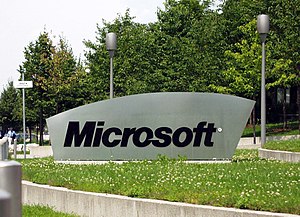 Image via Wikipedia29-Nov-2011
Image via Wikipedia29-Nov-2011At this time of the year, majority in our team has already been given a laptop in exchange for the old desktops we have been using for years; it is a mixture of GX280s and GX520s.
For our group, who makes use of WRQ Reflection to access PROMIS running in VMS, we found some problem when doing remote access from home. The Reflection apps doesn’t run. Or if it does, it is only for one time – the first time – and then it is gone forever.
A supposedly workaround to this is installing a virtual machine where WRQ Reflection will run in.
That also is its own problem – very unstable and very dependent on network performance. And when at home, who can guarantee that?
We were all struggling with this, our team, and as for me, I was simply doing a remote access to the other desktops that we have in the office – through VNC. For that, I use both Real VNC and UltraVNC; these two are working nicely in Windows 7 and of course, in Windows XP.
Then one day, I thought of checking out PuTTY, which is the emulator being offered in our Citrix farm. Consequently, in my surfing and browsing, I stumbled upon KiTTY, the younger sister, and which is advertised to have some, wait, more offerings than it older brother PuTTY.
I tried it, and I liked it.
Then the agony.
For PuTTY, there are numerous help articles that can be found scattered all over the web. Not quite for KiTTY. Or at least, even if there isn’t much, at least we should have those that will take us up and running with this free emulator software.
A few more days after, and I kept on searching and browsing.
I finally found what I am looking for.
You see, PuTTY comes with a registry setting, so if you would want to migrate your own settings, or in my case, let my colleagues share with the discovery, I would just need to export my registry data for PuTTY, and that’s it!
It took me some time, but not very long, to discover that KiTTY also have a registry setting. And as it was leveraging from its older brother, whose registry path I already know, it was enough for me to get the path for KiTTY and can follow on from there:
HKEY_CURRENT_USER\Software\9bis.com\KiTTY
The pot of gold I found, and I immediately set to work on my other desktop that ‘s just waiting to receive KiTTY as its one and only terminal emulator.
I guess we can say goodbye to WRQ Reflection, which costs an arm and a leg for each user. I hope they’ll just give us that amount, now that we have an alternative, which costs nothing.
Hope this is a big help to all KiTTY users out there.
This is my source on the registry setting for KiTTY:
KiTTY: Automatic saving
The download site for the KiTTY is also from 9bis.com:
KiTTY: Download
Till then!






















